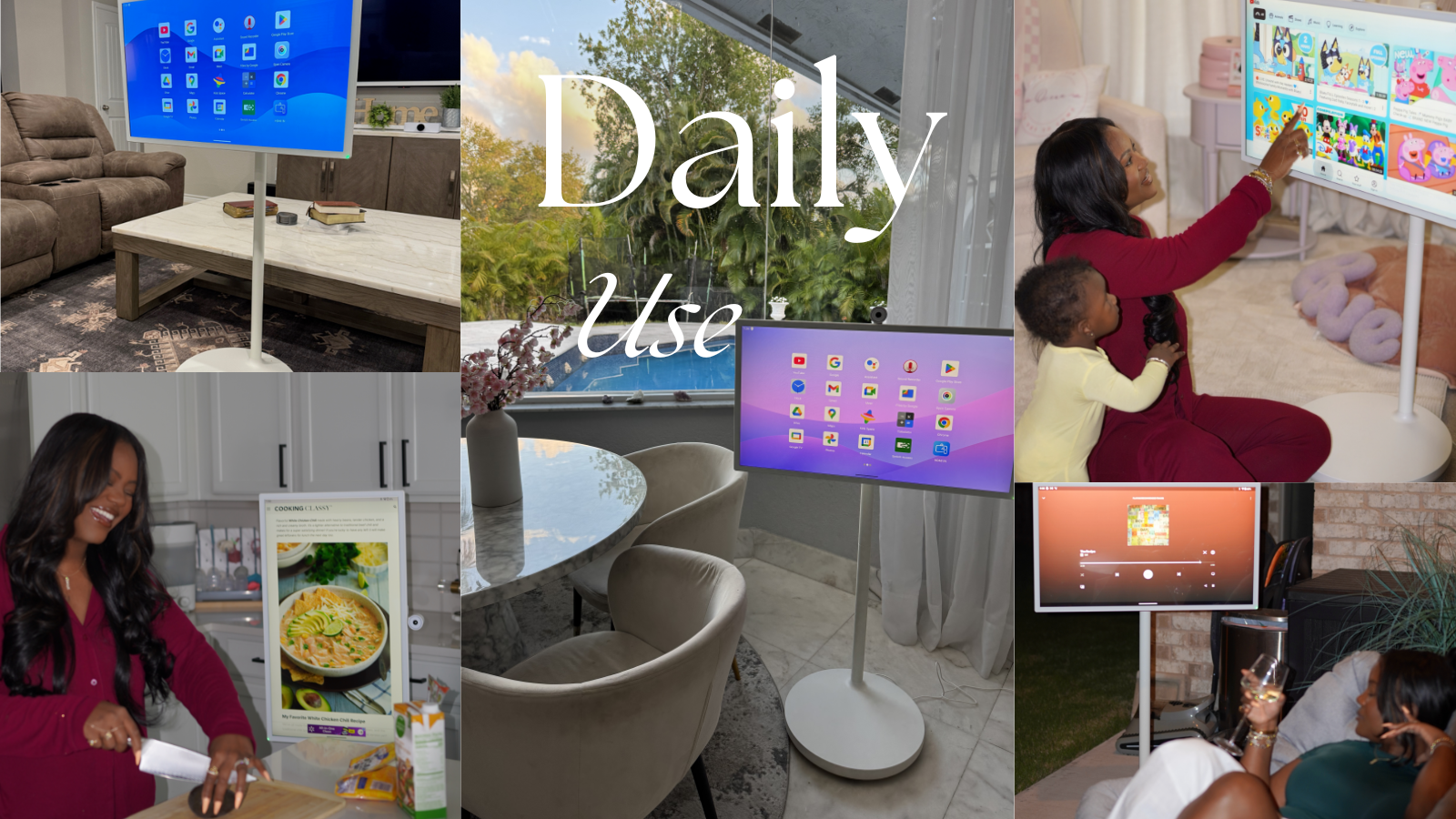Table of Contents
We are witnessing not just a minor change confined to a single space but a global transformation in home arrangements, where people are increasingly adopting the concept of what is notoriously called "smart homes". People use devices like Alexa and Google Assistant to control various functions through voice commands, to make daily tasks more accessible, and with internet connectivity now widely available across many electronic devices, it’s evident that consumers are increasingly drawn to the convenience of smart home technology.
Portable TVs have become an especially attractive option considering this context, not only for homeowners but also for individuals living in vans, small apartments, and dorms, where space efficiency is vital. This makes portable TVs a highly viable and in-demand product. Naturally, if you're planning to start an electronics business in 2025, you may want to consider investing in portable TVs.
Market Analysis and Trends of Portable TV on Wheels
The first question anyone who is recommended to start a portable TV business would have is, why? And it's fair to say that it is a decent enough question, considering you need to evaluate if the market and the audience are truly ready for a new product as such and if there is a chance of it being a success. By analyzing the market more critically, you will have a much better chance of succeeding by understanding where consumer preferences lie and how technological advancements are bridging this gap between convenience and tech. This will help determine if there is potential for portable TVs to succeed.
Surge in smart devices: Consumers are heading towards tech-based solutions because they enhance accessibility, convenience, comfort, and accuracy. Smart TVs, for example, quickly became a hit as they allowed internet connectivity, enabling users to stream applications they would normally access on laptops or phones, such as Netflix or YouTube. Connecting these apps to a TV provides a more immersive experience in the comfort of your space.
Remote learning and working: Many places incorporate TVs into their environments, such as schools, universities, and corporate offices, to facilitate presentations and display learning materials on screen, and having a portable tablet TV option can increase flexibility in accessing these TVs to improve communication, engagement, and interactive learning.

Outdoor and Event Viewing Demand: There is an increasing trend in portable entertainment options online, with people turning to Netflix and other streaming platforms to enjoy content while on the go. Outdoor events have also remained popular, be it bonfires, camping trips, or backyard movie nights. A portable TV on wheels betters these experiences by providing a convenient way to stream entertainment anywhere and anytime.
Retail and Business Use: Digital signage has been a major contributor to marketing for many businesses and retail stores. Many establishments use TVs to display presentations, promote new deals, or showcase menus. Having the portability option can add significant convenience, allowing businesses to easily move displays to different locations, optimize space, and improve customer engagement.
Why This Is A Good Business Idea to Sell Portable TV on Wheels
1. High Demand with a Growing Market
Consumers value portability, convenience, and ease of accessing real-time news and entertainment a lot. So much so that they heavily rely on it, treating it as a necessity for staying connected and entertained, whether on the go or at home. This makes tablet TVs and portable smart TVs an attractive option to target this specific audience. The rise of streaming services like Netflix, YouTube, and live sports apps has also fueled demand for flexible viewing solutions.
2. Competitive Edge in a Niche Market
There are plenty of conventional and even smart TV options in the market and it's easy to feel overwhelmed with the choices you have at hand. Portable TVs on wheels cater to a very specific audience that appreciates and values mobility. From home entertainment to outdoor activities, business conferences, educational institutions, and healthcare facilities, there’s a huge gap in flexible and adaptable display solutions that portable TV on wheels can cater to.
3. Diverse Revenue Streams
These days, businesses have more than just a single platform to sell their products on. While having a physical presence in an expensive showroom can be quite costly, especially if the location is in a commercial area, business owners now have multiple ways to sell portable TVs, including:
- Through direct sales using e-commerce platforms like Amazon, Shopify, or your own website.
- Partnering with B2B clients such as hotels, hospitals, event organizers, and educational institutions for bulk purchases.
- Providing rental services for weddings, corporate events, and outdoor screenings.
- By partnering up with streaming service providers, WiFi device companies, and electronic retailers to expand revenue opportunities.
4. Low Entry Barriers and Scalability
Unlike traditional businesses, this business requires low initial investment and can be scaled efficiently. You can start with a small inventory and expand based on market demand.
Target Audience and User Profile for This Business
It's really important that you identify who you are target audience is going to be as you start your portable TV stand business.
1. Smart Homes: Families look for flexible entertainment solutions and this isn’t just confined to watching movies and news channels, gamers can use portable TVs for an additional screen for consoles to get a more immersive experience at gaming. It can also be used for outdoor entertainment activities.

2. Businesses and Corporate spaces: Presentations are crucial in corporate spaces for presenting ideas, product launches, business proposals, and financial reports. To facilitate these presentations, many corporate spaces initially relied on projectors, some still do, but have since transitioned to using TVs for better display quality. A portable touch screen TV combines the convenience of projectors with the high-resolution display of TVs, helping corporations enhance their presentations with greater ease and efficiency.
3. Tutors and Remote Workers: Many educational spaces have incorporated tech in their learning curriculum so students' learning process can be more interactive and engaging. Having a portable smart TV not only helps with classroom TV portability, but students can also make use of it through online classes and virtual presentations.
4. Hospitality and Healthcare Industry: Hospitals and healthcare facilities are incorporating technology to improve the patient and visitor experience. They can use portable TVs to exhibit public health service messages or to display any important announcements, appointment schedules, or educational content for patients.

How to Set Up the Business
1. Conduct Market Research
To conduct a market search for portable TVs, look up competitors by researching online marketplaces, tech retailers, and brand websites to see what kind of products they are offering and what their prices are. This will help you establish a baseline pricing strategy.
Then, identify key suppliers in the market and determine who is manufacturing these products. By analyzing your competitors and checking for gaps or weaknesses in their services, if there are any, you can offer something unique, such as the convenience of a built-in portable TV with WiFi for home use. This will be your unique selling point (USP).
2. Choose a Business Model
Get in touch with manufacturers by reaching out through their preferred contact channels, such as email, phone, or business directories. If you're looking for a low-risk approach, consider dropshipping, so you don’t have to hold inventory or make a significant upfront investment.
However, if you plan to open an online or physical store, wholesaling is a better option; buy in bulk and sell through your own marketing efforts. You can also explore a B2B business model, where you sell directly to clients like hotels, hospitals, and educational institutions, which you can acquire through networking and strategic partnerships.
3. Build an Online Presence
Having an online presence for a portable TV business is always a good idea. List your product on your website and ensure that you have SEO-optimized descriptions and high-quality images to reach your audience effectively. You also can list your product on e-commerce platforms such as Amazon, eBay, and Shopify, depending on which platforms are most suitable in your country. This will help you expand your reach, attract more customers, and increase sales.
4. Implement Marketing Strategies
Figure out a marketing strategy that aligns with your business goals. There are plenty of online tools to help you, from influencer marketing to running social media ads on platforms like Facebook, Instagram, and TikTok. The key is to identify what will benefit your business the most based on your target audience and budget.
If you are skilled in content creation, focus on organic social media growth by posting engaging videos and tutorials. If you prefer paid marketing, invest in targeted ads to reach potential buyers. Experiment, analyze, and refine your strategy to maximize your reach and sales.
5. Provide Excellent Customer Service
Provide accessible customer support and fast shipping to ensure a satisfied customer experience.





